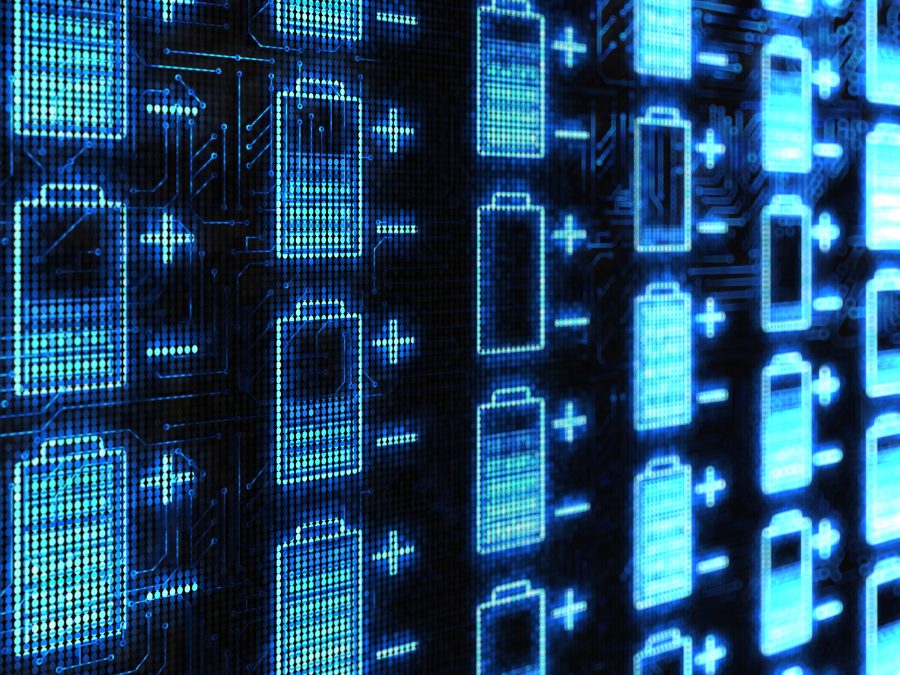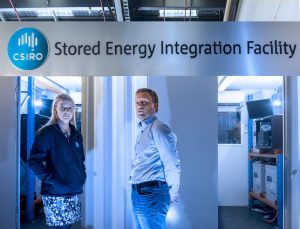Although our labs have been updated, our research question hasn't: how can we get reliable energy when we need it? This is where lithium-ion batteries can help.

Lithium-ion batteries – a handy energy storage solution
We’ve been working on the battery for decades, and although our labs may now be a little more cutting-edge, our research question hasn’t changed: how can we get reliable energy when we need it? Until now, energy storage has been the missing link.
Batteries let us store electrical energy and use it later, which means we can save excess energy and then supply it when needed, responding to increased power demands quickly.
The good news is that technological advances are making battery storage technologies cheaper and more accessible. Batteries have seen significant cost reductions over the past few years, and based on demand and production efficiencies, we can expect they’ll come down further still.
How do batteries work?
Batteries use a chemical process to store electrical energy. This energy can then be called upon at a later time, or redirected back into the grid.
Batteries vary in size: a set of AAs can fit in your pocket, a typical household system may look like a small fridge or wall unit, and a commercial system could be as large several rows of shipping containers (usually around 0.5-1 MWh per container)!
Lithium-ion – the details
Lithium-ion (li-ion) batteries are used extensively in mobile phones, laptops, electric vehicles and digital equipment. They are responsive to quick input/output and also hold their charge well.
Lithium is a very reactive element, so a lot of energy can be stored in its atomic bonds (meaning a high level of energy density within the battery).

Energy storage superstars at our Stored Energy Integration Facility.
Although very common in small devices, li-ion batteries can also be deployed to suit much bigger purposes. But it is also worth looking at how smaller systems could be distributed throughout the network so that as well as providing grid stability, they could contribute to power quality in different locations.
One of the main challenges with a li-ion system is providing ‘synthetic inertia’. This is where large, traditional energy generators have substantial spinning mass that can provide bursts of power for very short durations when disturbances happen in the network. Other energy generation sources are less able to achieve instantaneous output unless there is a storage element involved. Inverter-based systems (like li-ion batteries) could achieve this, but as a reasonably new development it is less proven at large scale.
There may also some restrictions when using li-ion systems in different climatic conditions, unless carefully managed.
Other types of storage
When it comes to ‘saving a bit for later’, there are plenty of options:
- Other battery types: these include lead-acid batteries like our UltraBattery, nickel-metal hydride batteries, and vanadium-based flow batteries.
- Molten salt can be used to retain thermal energy, which is especially useful in supporting solar thermal technology.
- Pumped storage hydro-electricity (or ‘pumped hydro’) uses flowing water to power turbines. The storage element comes where water is pumped from the bottom to the top of an incline, to be used as demand dictates.
As we look towards a low-emissions future, it’s clear that battery storage is about to become big business in our mission to integrate renewable energies like solar and wind into our daily usage.
Our Newcastle Energy Centre is testing and evaluating a variety of different battery storage systems at our Stored Energy Integration Facility.
We’re also looking into how to improve battery efficiency through salt baths.


1st December 2017 at 1:57 pm
That was a fault in the build of that device which bent part of the battery and ruining it’s integrity.
14th July 2017 at 4:27 pm
Wasn’t Samsung having triouble with Lithium -ion batteries bursting into flame. What safeguards are there with large scale Li-ion batteries?
14th July 2017 at 3:34 pm
Seeing as how Australia has the largest deposit of Lithium in the world, can’t the Huge battery being planned for South Australia be manufactured here and provide work for us?